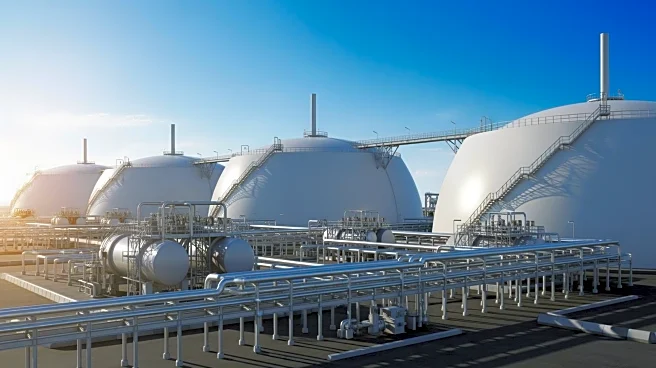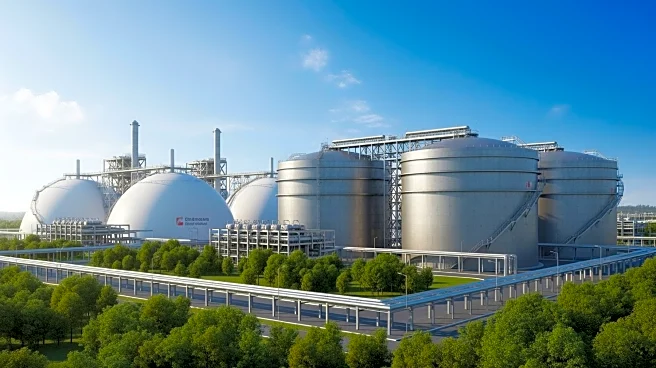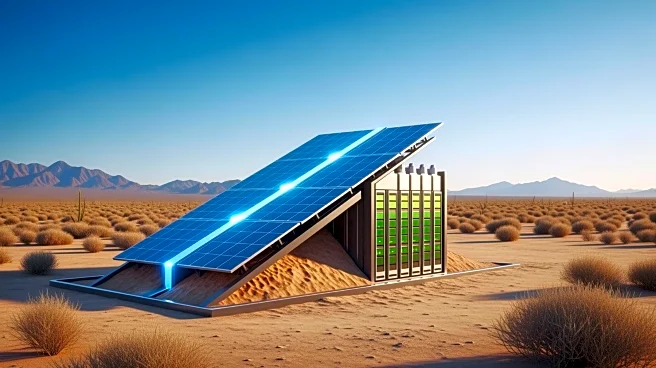What's Happening?
The U.S. Energy Information Administration (EIA) has announced plans for North America's liquefied natural gas (LNG) export capacity to more than double by 2029. The U.S. is set to add an estimated 13.9
billion cubic feet per day (Bcf/d) to its liquefaction capacity, maintaining its position as the world's largest LNG exporter. The forecast includes capacity additions in Canada and Mexico, contributing to a total increase from 11.4 Bcf/d in 2024 to 28.7 Bcf/d by 2029. These expansions are part of broader global LNG capacity growth, with North America accounting for over 50% of expected additions.
Why It's Important?
The expansion of LNG export capacity is crucial for meeting global energy demands and enhancing North America's role in the international energy market. This growth supports economic development, job creation, and energy security, while also influencing global energy prices and trade dynamics. As countries seek to diversify energy sources, LNG offers a cleaner alternative to coal and oil, aligning with environmental goals and reducing carbon emissions.
What's Next?
The planned capacity expansions will require significant investment and infrastructure development, potentially impacting local economies and job markets. Stakeholders will need to navigate regulatory challenges and environmental considerations as projects progress. The increased export capacity may also affect global energy trade patterns, with North America playing a pivotal role in supplying LNG to international markets.
Beyond the Headlines
The focus on LNG highlights the ongoing transition towards cleaner energy sources, balancing economic growth with environmental sustainability. As global energy demands evolve, the role of LNG in reducing carbon footprints and supporting renewable energy initiatives will be a key consideration for policymakers and industry leaders.












